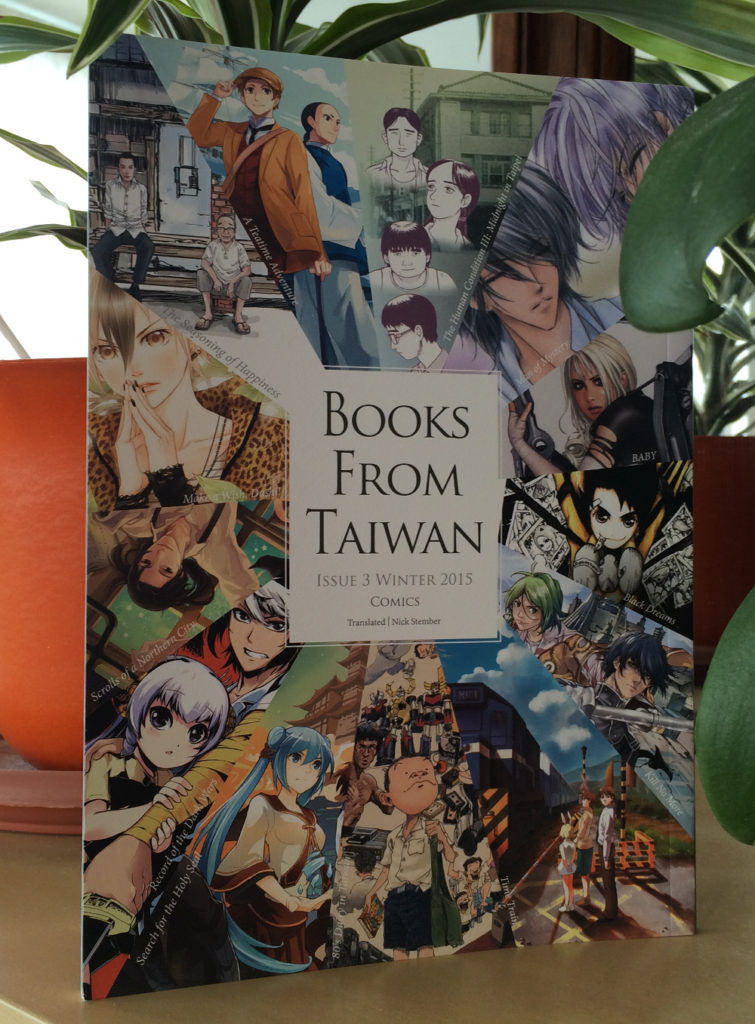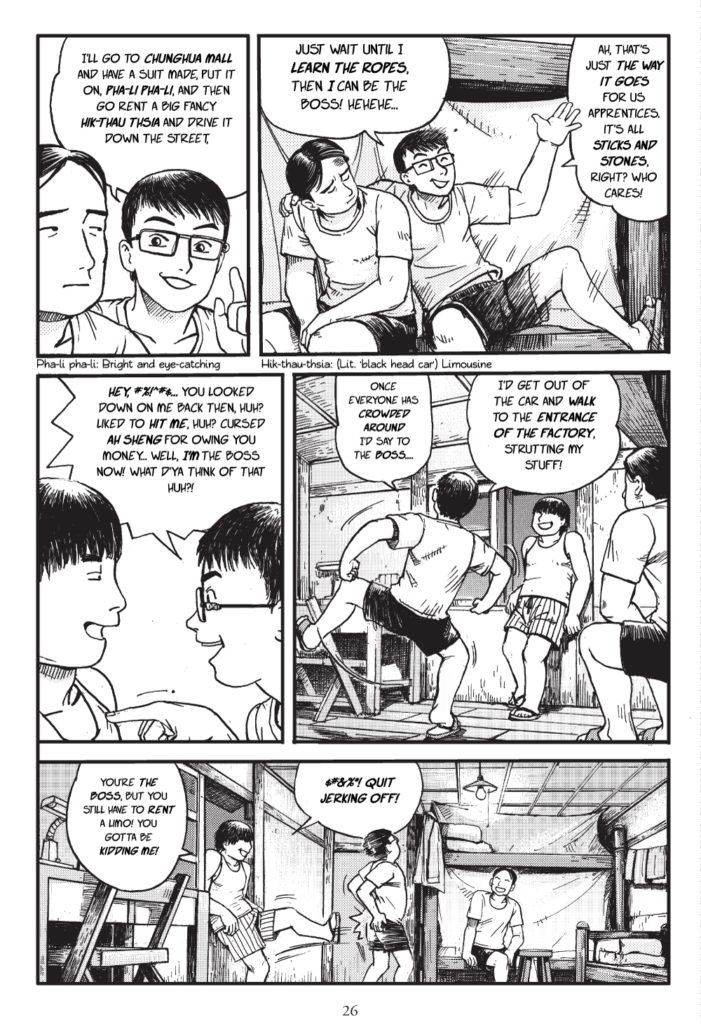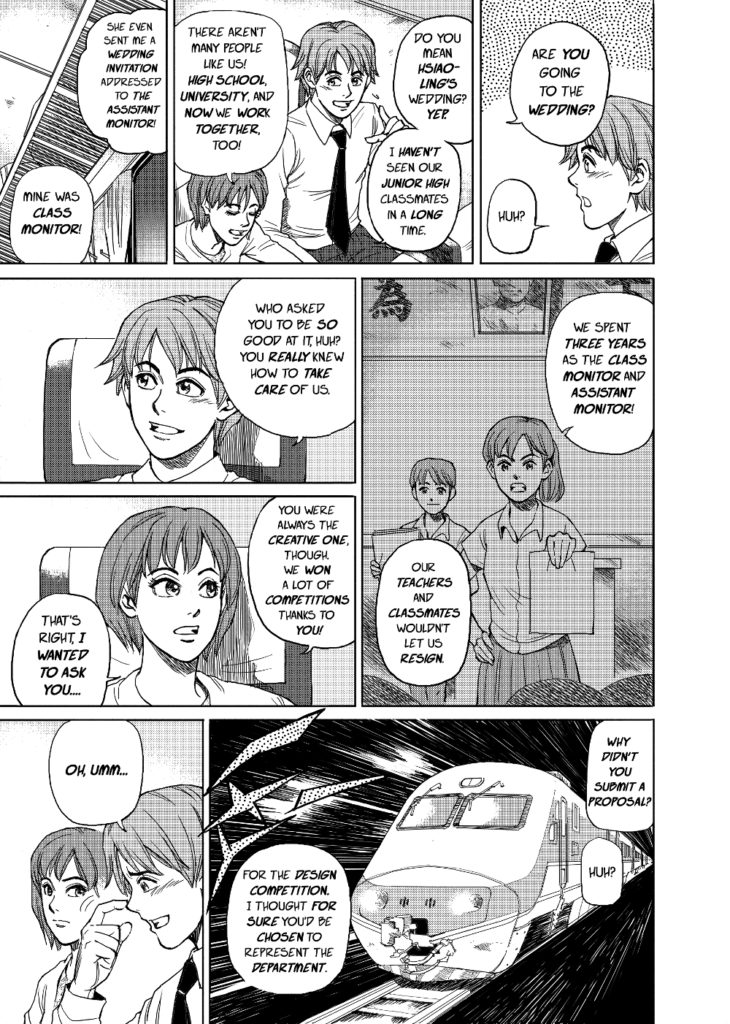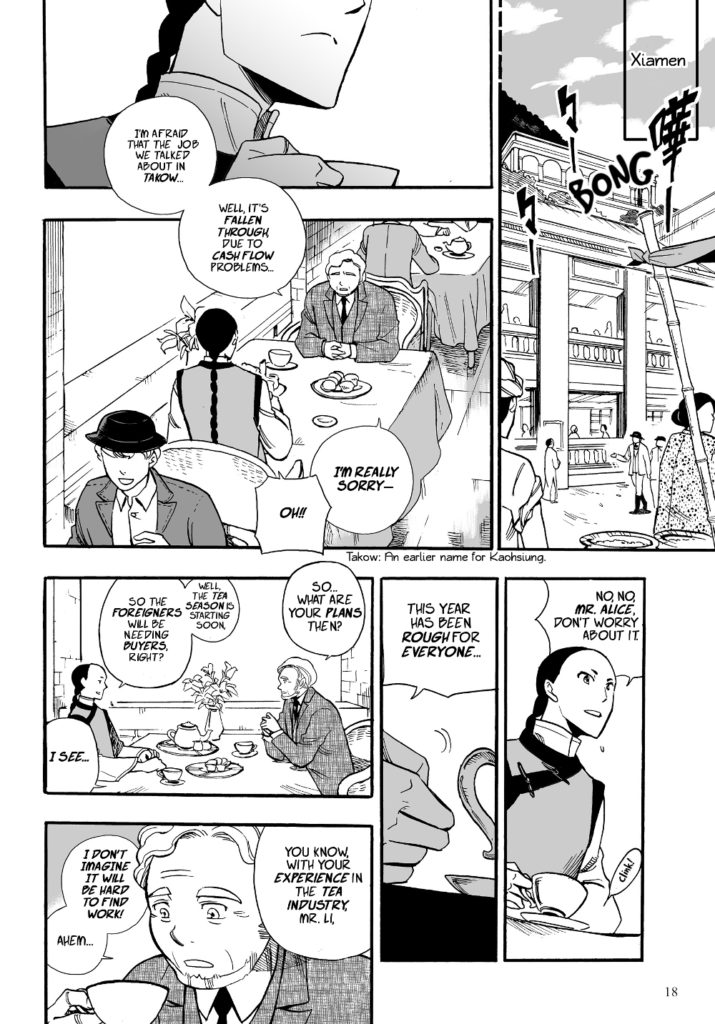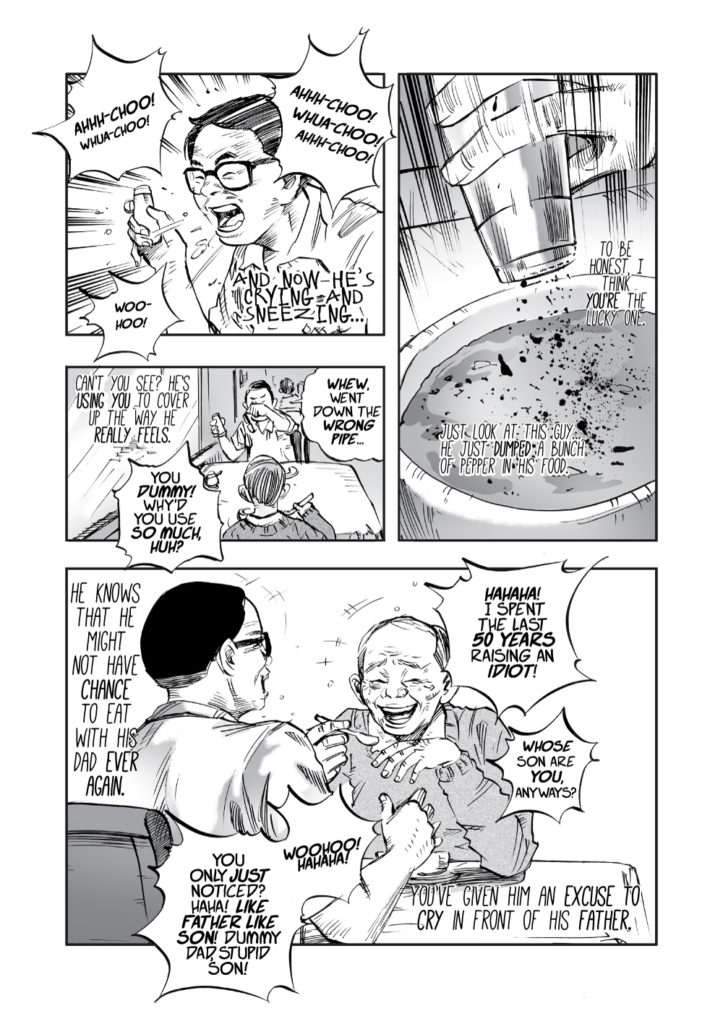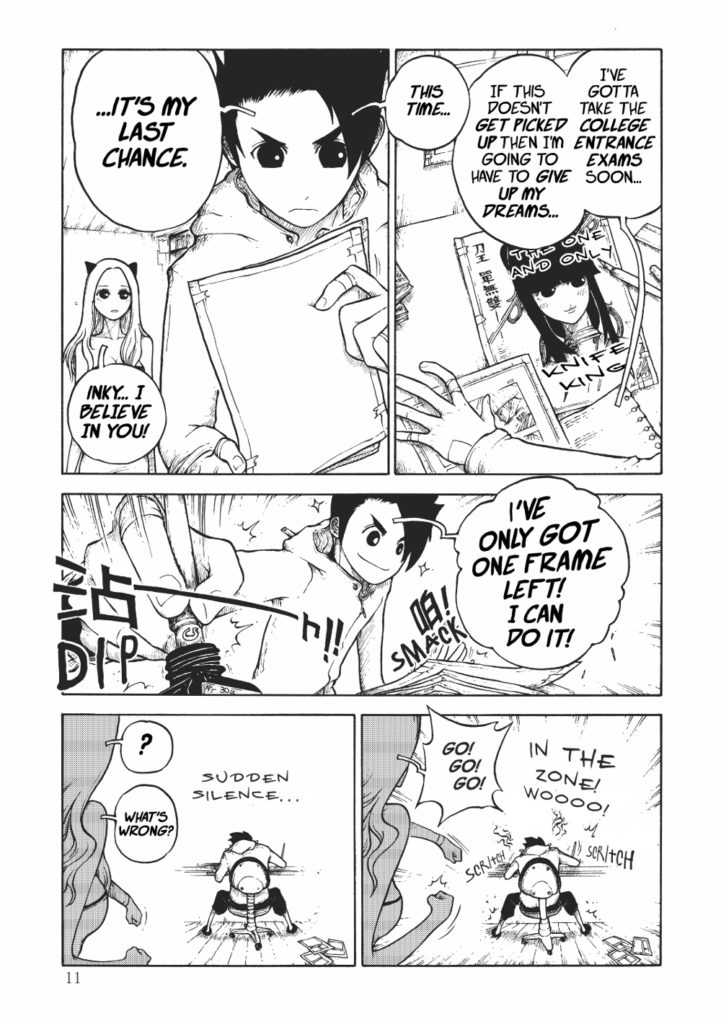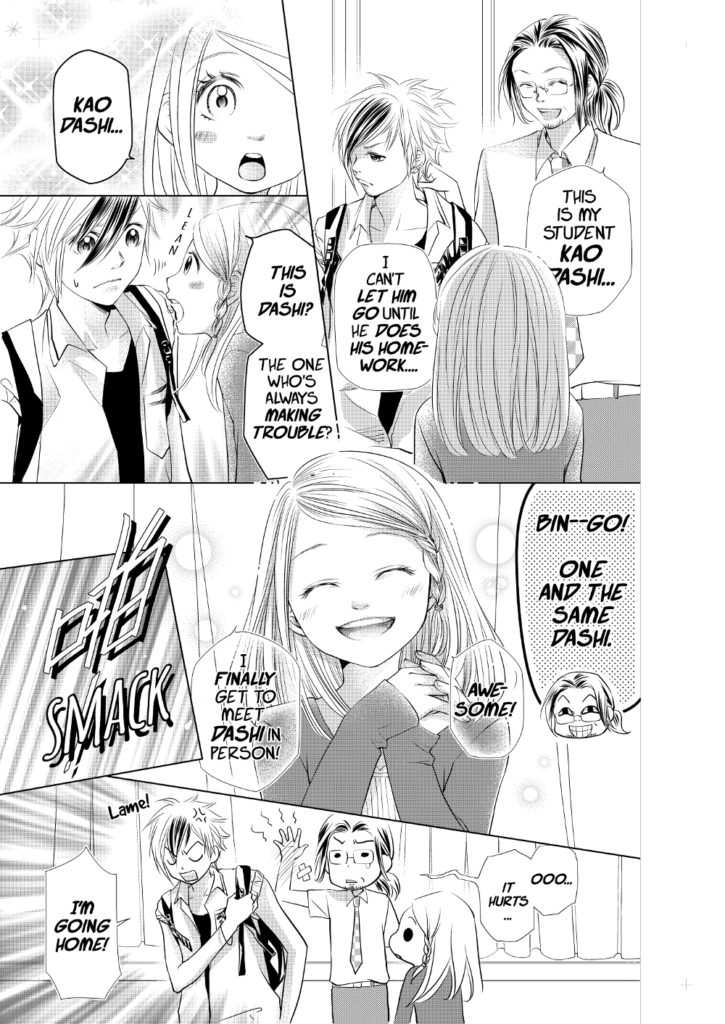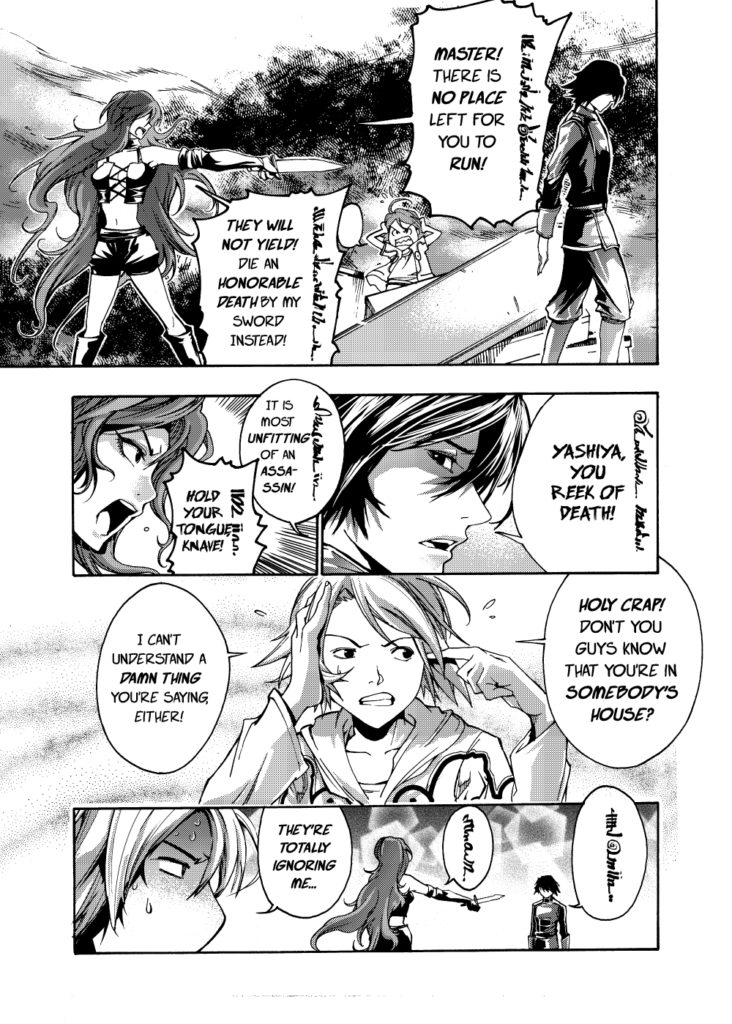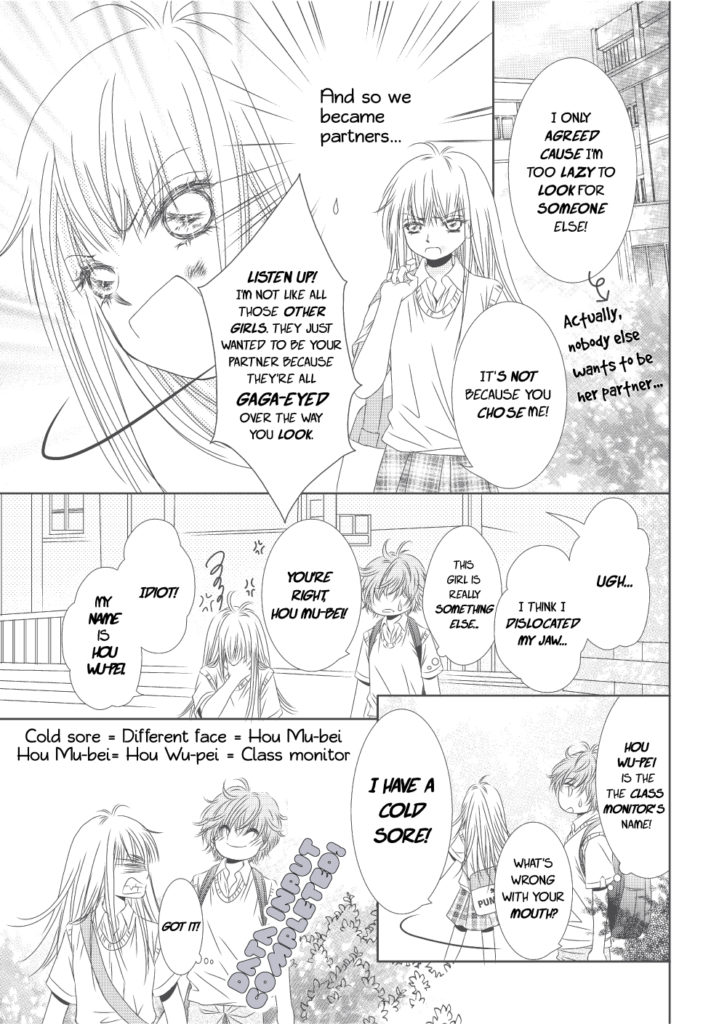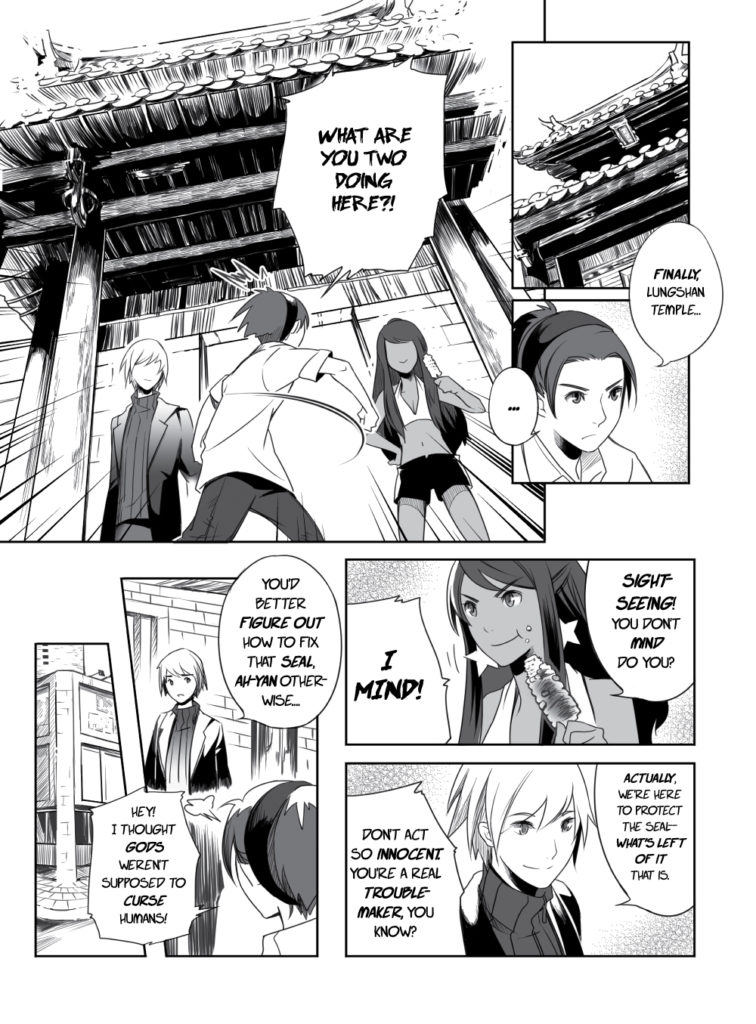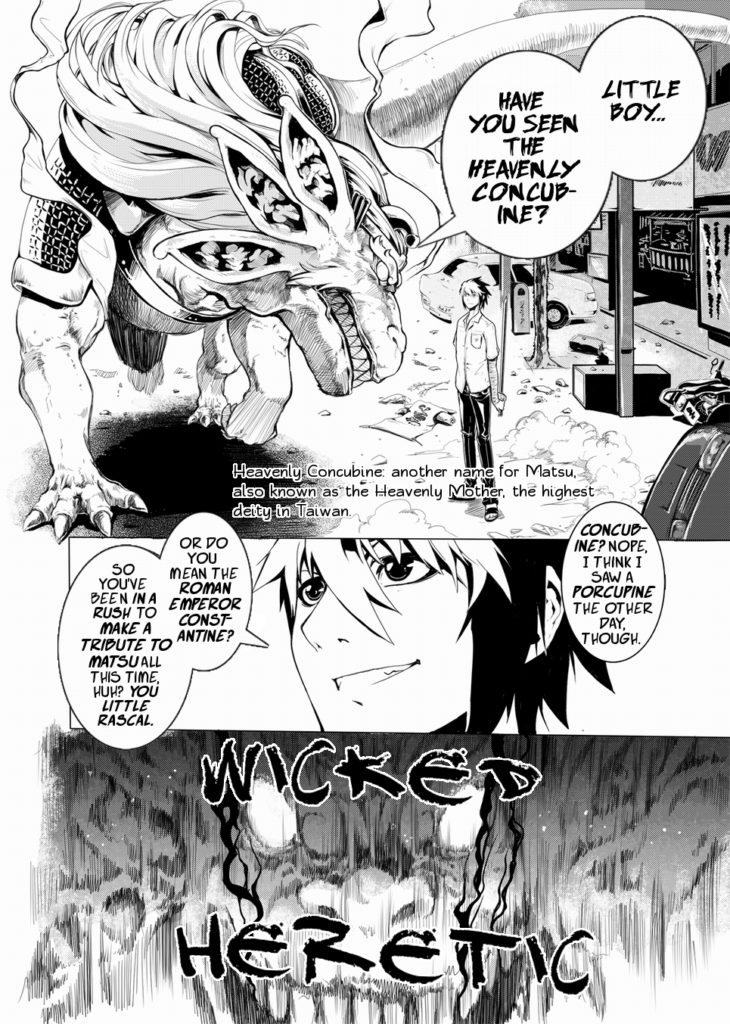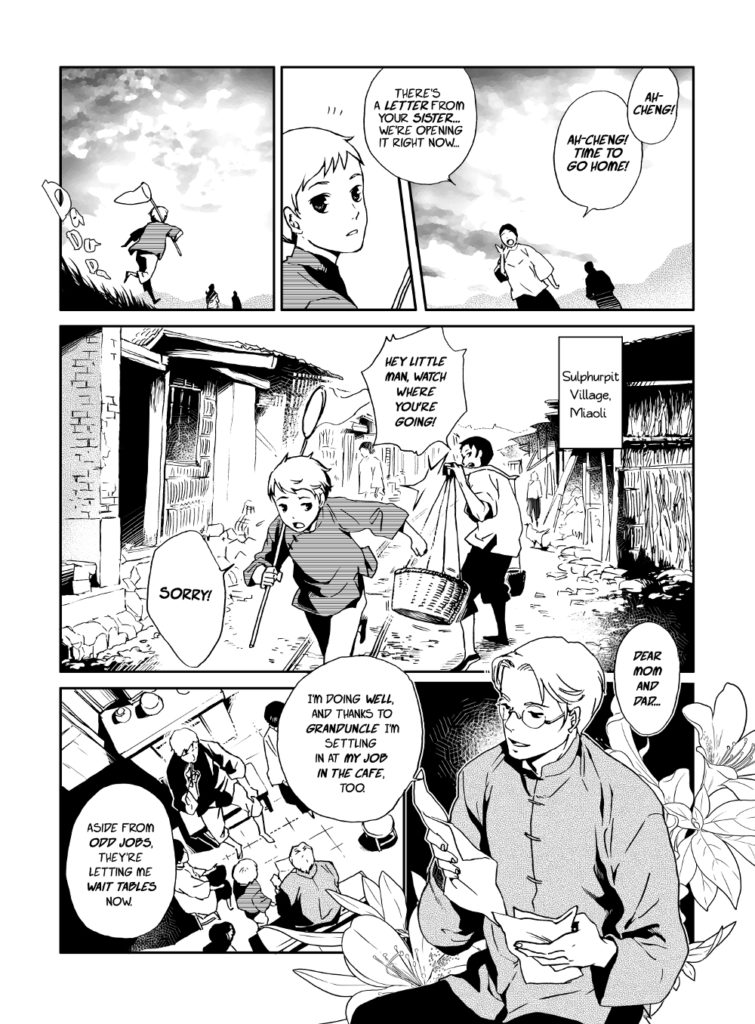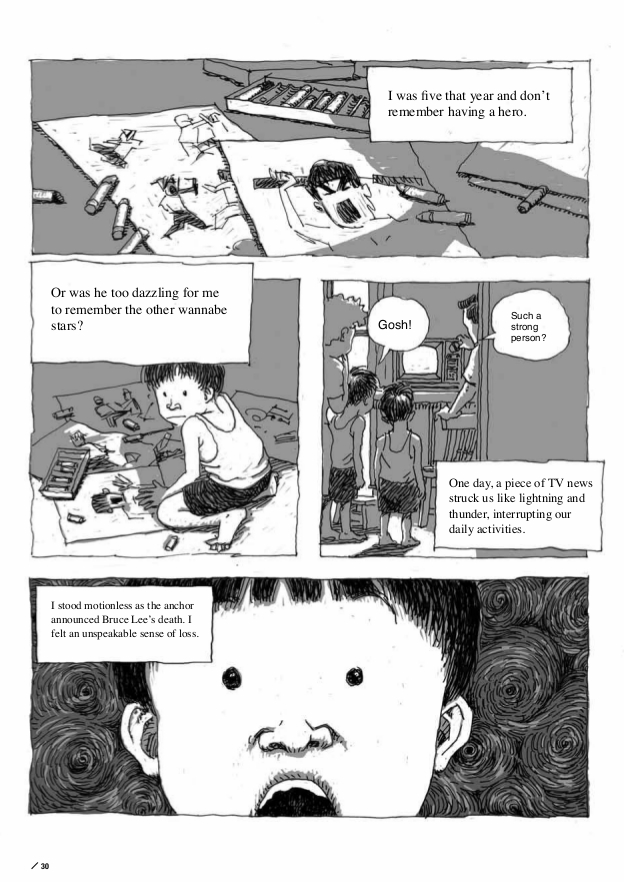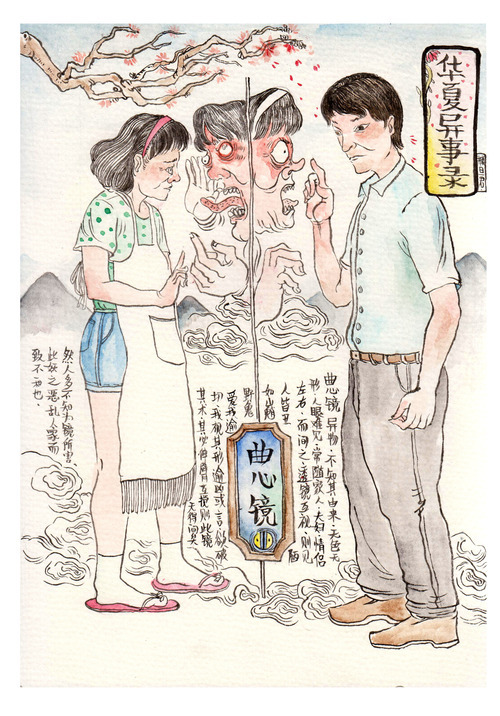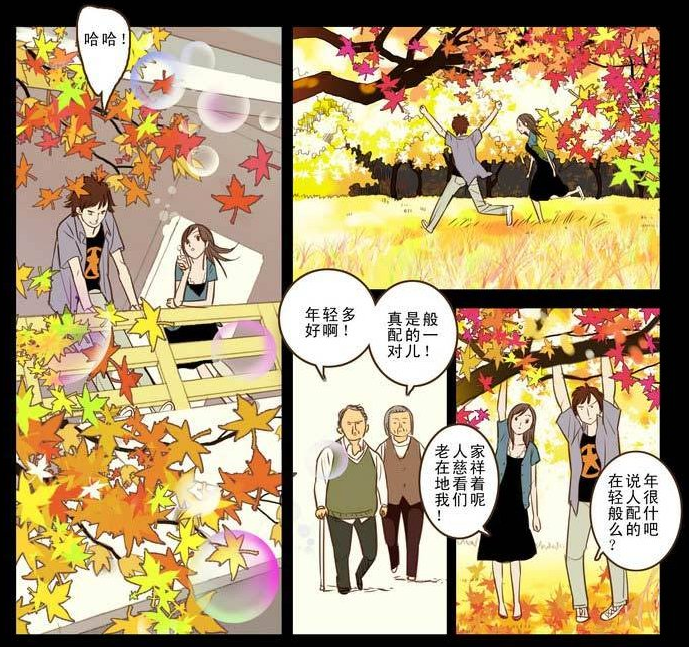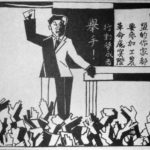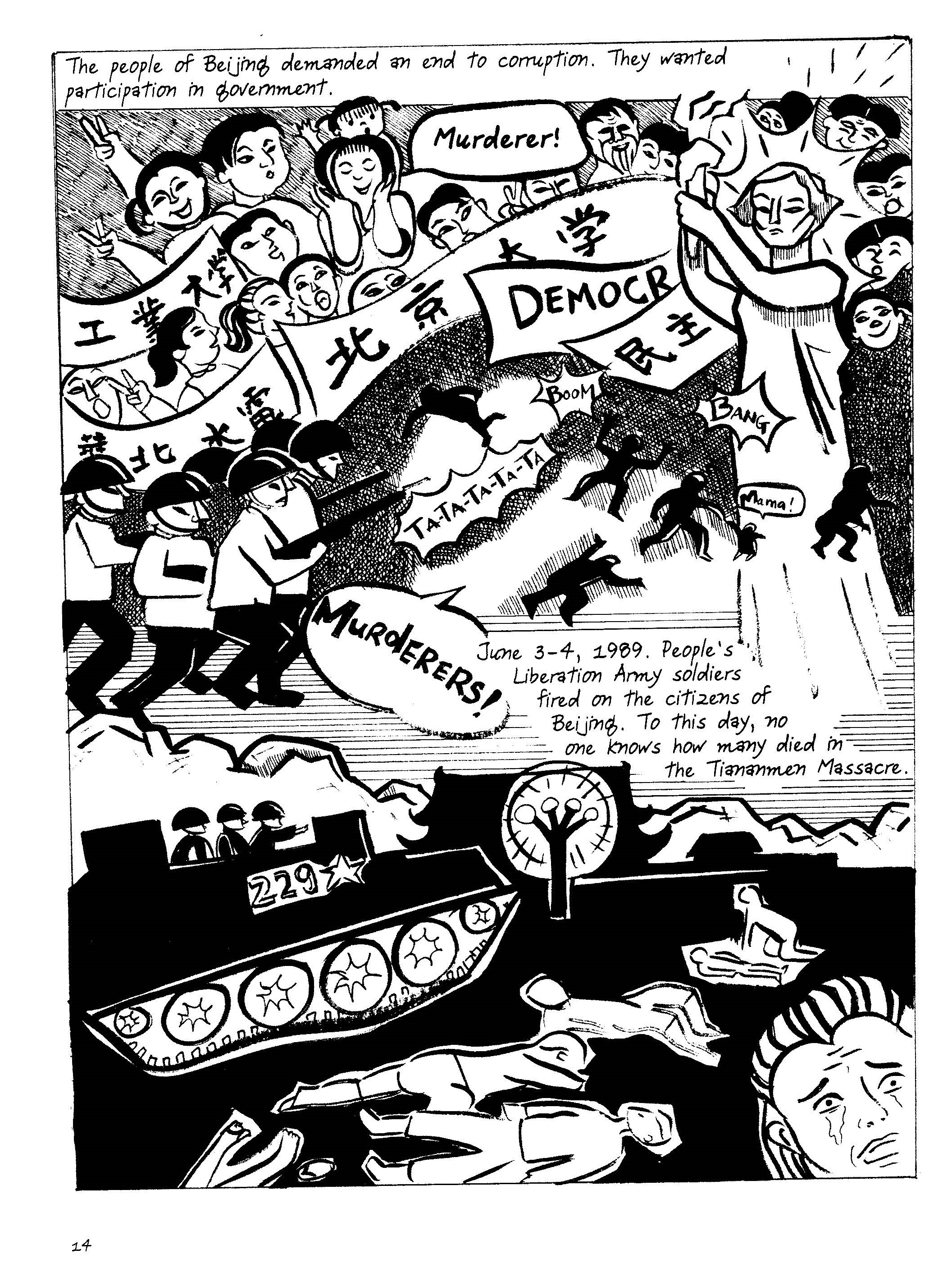The following is a sneak peak of a talk I have been invited to give later this month for the Center for Chinese Research at the University of British Columbia. If you are interested in the topic and happen to find yourself in Vancouver, the talk will be Monday, February 29, 12-2pm in Room 120 of the C.K. Choi Building.
Although comics and cartoons (known in Mandarin as manhua) have existed as form of popular entertainment in Taiwan for at least a century, in comparison to Japanese manga they are almost completely unknown to your everyday English-speaking comics fan. Fortunately, the Ministry of Culture of the Republic of China has been working to rectify this situation through their web-based marketing effort Books from Taiwan, which just last month released samples of twelve award-winning works of Taiwanese cartooning (translated and lettered by yours truly). In addition to the website, which includes over 300 pages of high quality PDFs and background information available to download free of charge, Books from Taiwan has also printed a shorter, 70-page condensed version of the same project to be handed out at book fairs and comic cons:
Understandably, I’m pretty stoked about this project. Here are quick summaries of the twelve books I was hired to translate and letter, with links to the sample chapters on Books from Taiwan, plus one that was done by the publisher:
1. Chang Sheng’s 常勝 post-apocalyptic thriller BABY
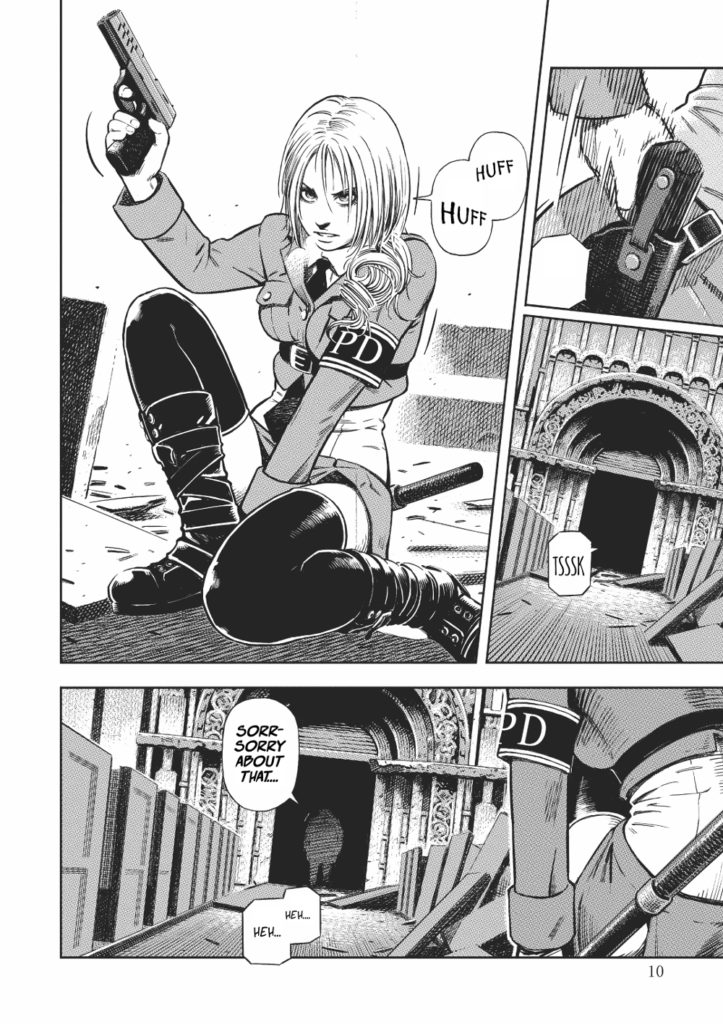
● Winner of the 2011 Golden Comic Award For Best Comic
● Winner of the 2011 Golden Comic Award For Best Shonen Manga
December 1, 2043 AD. The mysterious lifeform BABY invades Earth and takes control of a number of human hosts, parasitising them. The possessed bodies metamorphise into monsters called ‘Organos,’ which slaughter a great mass of humanity in a series of bloody massacres, bringing mankind to the brink of extinction. Thereafter, December 1 comes to be known as ‘Extinction Day.’ While battling an Organo, Elisha, the protagonist of the story, finds that her left hand has been infected by BABY. However, aside from a throbbing pain in her hand, nothing about the rest of her body changes. Elisha begins to search for other survivors, hoping to solve the mystery of BABY…
Baby was first serialised in a shonen manga magazine before being collected into a five-volume set. It is rare example of a Taiwanese science fiction comic, and is also considered Chang-Sheng’s best known work. Although he began drawing comics later than many other artists, his bold, outside-the-box thinking has placed him in a league of his own.
Click here to read the first chapter of BABY.
2. Akimma Lee’s 李鴻欽 adaptation of Wu Nien-Jen’s 吴念真 acclaimed drama Midnight in Taipei 台北上午零時
The Human Condition is a critically acclaimed and popular series of stage plays written and directed by filmmaker Wu Nien-Jen starting in 2001, which depict the lives of everyday people trapped in grinding poverty in a colloquial and familiar language.
This book, Midnight in Taipei, was adapted from the third story in the series by the cartoonist Akimma Lee. Beginning in 1969 and ending in 2000. The protagonists are three young men from the south who work in a factory in Taipei. Often beaten by their boss, life is tough and the three form a close bond in their shared hardship. Fortunately, the local noodle shop owner is kind to them, and just watching the pretty young girl who works there is a salve for their souls. That is, until a terrible murder changes everything…
Click here to read the first chapter of Midnight in Taipei.
3. Jian Jia-Cheng’s 簡嘉誠 documentary adventure Time Train 時空鐵道之旅
● Winner of the 2013 Golden Comic Award For Best Comic
The protagonists of Time Train are two typical nine-to-fivers headed back to their hometowns on the train. Fate seems to have brought them together—they attended the same schools and ended up working at the same company, and now they meet on the same train home. But when the train collides with a truck at a crossing, they, along with a girl wearing rabbit ears, are sent on a journey through time. Along the way they get to see a steam train in 1911, the 1935 Alishan forest railway, the sugar railways in 1960s, and the blue Chukuang Express of the 1970s. In the course of their adventures they discover the far-reaching impact that railroads have had on the lives of the common people… and the feelings that they have for each other.
This book is a warm and touching story of four special moments in over one hundred years of Taiwanese railway history. Appealing not only to serious trainspotters, even non-specialist readers have found Jian Jia-Cheng’s approach to the subject new and exciting.
Click here to read the first chapter of Time Train.
4. Kiya Chang’s 張季雅 historical fiction A Teatime Adventure 異人茶跡:淡水1865
● Winner of the 2014 Golden Comic Award for Best New Artist
Tamsui, 1865. After becoming a treaty port following the Tianjin Accords of 1858, Tamsui is flooded with ambitious entrepreneurs. After studying the climate of Taiwan, the Scotsman John Dodd is optimistic about the future development of the tea industry in Taiwan. He sets up a firm in preparation to grow and export tea. Around the same time, Li Chun-Sheng arrives from Xiamen. His proficiency in English allows Chun-Sheng to become Dodd’s assistant, but they find themselves facing disinterested local tea farmers, obstinate government officials, cheating business partners, among many other difficulties. Despite the odds, they manage to struggle on and make real names for themselves in the history of tea industry in Taiwan.
While A Teatime Adventure tells a simple story, Kiya Chang’s skillful use of dialogue and character makes this story about the distant past not only informative, but also interesting and engaging for contemporary readers.
Click here to read the first chapter of A Teatime Adventure.
5. Ruan Guang-Min’s 阮光民 foodie memoir The Seasoning of Happiness 幸福調味料
● Winner of the 2012 Golden Comic Award For Best Comic
This book uses a simple style of drawing to tell six stories about taste, including an old man who is willing to put his life on the line for an old shop, a young person who wants to realise his dreams, a reformed criminal, a customer in love with the owner of a snack shop, and a philosophical discussion between a sugar jar and a pepper shaker. Each displays Ruan Guang-Min’s deep and focused attention to the details that make up daily life. Normal, everyday conversations are imbued with a warm empathy, and his careful brushstrokes and colours create an atmosphere thick with nostalgia.
Click here to read the first chapter of The Seasoning of Happiness.
6. T.K. Zhang Shixin’s 章世炘 action comedy Black Dreams 黑色狂想曲
● Winner of the 2011 Golden Comic Award For Most Promising New Comic
One day, Inky, a kung fu gear head, is drawing a comic when he accidentally dips his pen into a bottle of ‘Thousand Year Ink.’ Given to him by his childhood sweetheart, Shen, the ‘Thousand Year Ink’ unexpectedly pulls them both through the page and into the Inklands. Stranger still, in the Inklands, all of Inky’s wild fantasies have become reality! As Inky’s creations come to life, however, and things start getting out of control, how will Inky and Shen get to escape this dangerous fantasyland?
Compared to T.K. Zhang Shixin’s first book, Skanda: Flaming Truth, the art in Black Dreams is relatively simple and direct, but the non-stop fantastic plot twists demonstrate the maturation of this young comic artist.
Click here to read the first chapter of Black Dreams.
7. Keli’s 顆粒 fantasy romance Make a Wish, Dashi! 許個願吧!大喜
● Winner of the 2011 Golden Dragon Award For Best Shojo Manga in China
● Silver Award of the 2011 International Manga Award in Japan
● Winner of the 2012 Golden Comic Award For Best Shojo Manga
● Winner of the 2012 Golden Comic Award For Best Comic
Kao Dashi is a notorious bad boy. His teachers have all but lost hope, and only his homeroom teacher, Mr Dai, hasn’t completely given up on him. One day he finds himself with no choice but to take Dashi with him to the hospital to look after his daughter, Tien-Le, thus seeding an important friendship between Dashi and Tien-Le. In the meantime, a young man claiming to be an angel tells Dashi he will grant him a single wish, if only he does what is asked of him. What does Dashi wish for? And can he complete the tasks given to him by the angel?
Make a Wish, Dashi! is a love story, pure and simple. While creating a beautiful fantasy for her readers, Keli uses twists of fate to paint an intimate portrait of human nature, making for a deep reflection on the ways we care for each other.
Click here to read the first chapter of Make a Wish, Dashi!
8. A-Wei’s adaptation of Yu Wo’s 御我 net novel Kill No More 不殺
A murderer who has sworn a vow never to kill again—Lyol accidentally falls into another world where he runs into the extremely lazy Kaisi. The two get caught in a web of trouble, and end up being forced to attend a magic school. While Lyol does his best to live a life free of killing, he discovers that in this crazy, mixed up world, with no rules to speak of, keeping his vow might end up causing more problems than it will solve. Meanwhile, Kaisi, who had hoped that Lyol might help him make some money to finance his life of leisure finds that everything that Lyol gets mixed up in always ends up going in an unexpected direction. The more he tries to distance himself from Lyol, the more he ends up getting pulled in, deeper and deeper…
Like in her wildly popular novels, ½ Prince, Hero Unhinged, and Legend of the Sun Knight, YuWo uses her wacky sense of humor and keen ear for dialogue to create an engaging tale which is skillfully illustrated by A-Wei, winner of best new talent at the Golden Comic Awards in 2002 for his graphic novel My Light Blue Lover.
Click here to read the first chapter of Kill No More.
9. Huang Chia-Li’s 黃佳莉 short story collection Man of Mystery 謎樣少年
● Winner of the 2013 Golden Comic Award For Best Shojo Manga
This book is made up of five stories: the beautiful, young man who drives women wild but who can’t adapt to the world around him; the hot-blooded young man who can’t tame his competitive nature; the artistic young man who always sits next to the fields, drawing; the popular singer who stays in the hospital secretly; and the wealthy playboy, jaded with all he sees.
From these five extremes, Huang Chia-Li takes her readers on a journey to explore man’s many different natures and possibilities.
Click here to read the first chapter of Man of Mystery.
10. YinYin’s supernatural epic Search for the Holy Seal 上上籤
● 2012 Golden Comic Award Best New Artist
Ah-Yan is an architectural conservation major. One day, his aunt, Mary finds an ancient looking stone seal. Just when she is showing off her find, a god named Jinwu suddenly appears and tries to take the seal, saying that it is the Holy Seal of the Heavenly Palace. At the same time, the Heavenly Palace, which has just discovered that the seal is missing, sends out their own special agents, ‘Far Sight’ and ‘Good Ear’, to spy out and retrieve the holy relic. In the confusion, Ah-Yan learns that the struggle for the holy seal is actually tangled up in a heavenly love affair…
YinYin cleverly uses a fantastic story about chasing after a holy seal to introduce the unique ornamentation of Taiwanese temples and the stories behind them. Additionally, she gives the heavenly realm a structure similar to modern government, dressing the gods of time immemorial in modern garb like regular people, the juxtaposition making for a pleasant surprise.
Click here to read the first chapter of Search for the Holy Seal.
11. Wei Zhong-Cheng’s 韋宗成 social satire Record of the Dark Wars 冥戰錄
● Nominated for the 2010 Golden Dragon Award For Best Shonen Manga in China
● Nominated for the 2011 Monkey King Award in China
● Second Prize for the 2011 National Education Research Academy Awards For Best Comic
● Winner of the 2012 Golden Comic Award For Best Shonen Manga
After the 1999 Jiji earthquake devastated Nantou, Taiwan, demons began to wreak havoc in the terrestrial realm, leading the police to set up ‘Project Blackout’ to eliminate them. One day, a terrible monster appears in Taipei. The police team up with the gifted teenage magician Chen Po-Jung to behead the beast and banish the evil spirit. In the process, Po-Jung runs into a girl who shares a name with the Goddess Matsu, worshipped by millions in the temples of Taiwan. Po-Jung takes the pretty Matsu under his wing only to discover that the unrest in the underworld and Matsu’s sudden appearance have a surprising hidden connection…
Unlike the majority of long form comics in Taiwan, which are usually first serialised in magazines before being collected into books, Wei Zhong-Cheng’s Record of the Dark Wars represents one of the rare exceptions to this rule.
Click here to read the first chapter of Record of the Dark Wars.
12. AKRU’s historical fantasy Scrolls of a Northern City 北城百畫帖
● Winner of the 2011 Golden Comic Award For Best Comic
● Japan Media Arts Festival Notable Work
Scrolls of a Northern City is set in the Taipei of 1935. The Great Taiwan Exhibition is about to open, and the newly founded city shines like in a dream, sparkling bright in the night. In the northernmost corner of the city, in first floor of Café Bai-Hua-Tang (The Hall of a Hundred Paintings), the scent of freshly baked pastries wafts into the air and pretty waitresses wearing kimonos and frilled aprons attend to the customers. On the second floor is the owner’s private library, containing a large and diverse collection of books. Spirits roam the shelves, reading at their leisure. Even more surprising perhaps, is that the handsome young owner appears to be hiding a secret power, only to be revealed when things start to go wrong…
This book made up of three short stories, each incorporating elements of fantasy. AKRU depicts the story of a mysterious and magical shopkeeper who is a medium for the spirits with careful brushstrokes, instilling both the historical background and the sentiments of the characters a dreamlike romance.
Click here to read the first chapter of Scrolls of a Northern City.
13. Sean Chuang’s 小莊 childhood memoir 80’s Diary in Taiwan 80年代事件簿
These are the stories of our generation. Back then, posters were hanging everywhere telling us to take back China and every time we went to the cinema, we had to stand up and sing the national anthem. End of year exams pressed heavy on our young shoulders, and we played baseball with nothing more than sticks and pieces of newspaper as gloves. Only when martial law was lifted in 1987 did things start to change, people took to the streets to protest and the politicians fought in the chamber, pirate VHS flooded the streets and beer shacks were rammed with people…
With his unique writing style and point of view, Sean Chuang’s ‘80s Diary in Taiwan captures many warm moments of a bygone era. Perhaps they evoke a little embarrassment, and perhaps even regret, but even more so, this is a book that conveys the poignant feeling or relief. Through these twelve episodes, let’s pay our respects to our long gone youth.
Click here to read the first chapter of 80’s Diary in Taiwan 80年代事件簿. (Unlike the above twelve comics which I translated and lettered, 80’s Diary in Taiwan was completed by the publisher.)
